




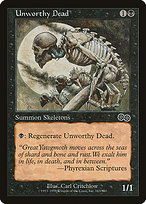



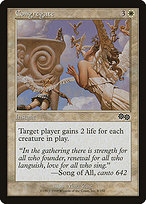





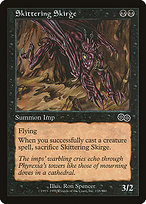


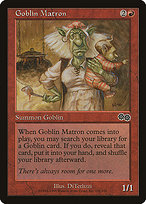











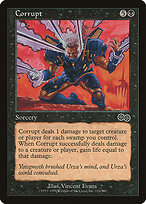
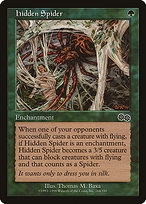




























Urza's Saga is a large set with 110 commons, 110 uncommons, 110 rares, and four variations of each standard basic land. This is the normal size for a large set of this era. The set was printed in the USA and Belgium.
Urza's Saga was sold in 15 card booster packs. Booster boxes have 36 packs.
The US printing uses sequential collation with 10 × 11 sheets. Packs are back-facing and contain 11 commons, 1 rare, and 3 uncommons (in that order). Basic lands do not appear in booster packs.
| 11 Commons | 1 Rare | 3 Uncommons | |
Although they exist, I have not observed any US tournament packs. [1]
Commons have the same basic structure as Mirage and Tempest. There are four common runs. Two, A and B, have 30 cards (each twice) and two, C and D, have 25 cards (again, each twice). Each pack contains 6 commons from A and B followed by 5 from C and D. The A and B commons can be in A-B order or B-A order. Either way, the split will be either 3-3 or 4-2. (The observed rate of 4-2 packs is much lower than Mirage — around 1/10. The difference may just be a product of small sample size.) The C and D commons can also be in either order independently of the ordering of A and B. (It is possible that these ordering are correlated in the same box, but I haven't seen a booster box opening.) Their split will be 3-2 or 2-3.
Note that there is apparent symmetry between A and B and between C and D, so the labels here are arbitrary. (If there is correlation between ordering in starter decks, I reserve the right to rearrange the labels for consistency with Mirage and Tempest.)
Run A contains 30 cards each twice. Cards are in a repeating color pattern of white, black, green, blue, red. It is probably printed on the same sheet as either C or D. The choice of first card is mostly arbitrary.
 |  |  |  |  |  |  |  |  |  |
 |  |  |  |  |  |  |  |  |  |
 |  |  |  |  |  |  |  |  |  |
 |  |  |  |  |  |  |  |  |  |
 |  |  |  |  |  |  |  |  |  |
 |  |  |  |  |  |  |  |  |  |
Run B also contains 30 cards each twice. Cards are in a repeating color pattern of white, black, green, blue, red. This run also includes the common cycling lands, and they are treated as being the same color as the color of mana they produce for the purposes of sheet arrangement. This run is probably printed on the same sheet as either C or D. The choice of first card is mostly arbitrary.
 |  | 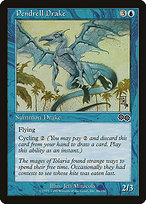 |  | 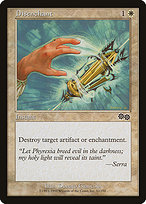 |  |  |  |  | 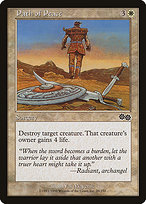 |
 |  | 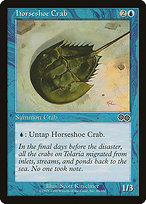 |  |  |  |  |  |  |  |
 |  |  |  |  |  |  |  |  |  |
 |  |  |  | 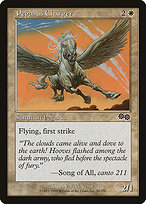 |  |  |  |  |  |
 |  |  |  |  |  |  |  |  |  |
 |  |  |  |  |  |  |  |  |  |
Run C contains 25 cards each twice. Cards are in a repeating color pattern of white, black, green, blue, red. It is probably printed on the same sheet as either A or B. The choice of first card is mostly arbitrary.
 |  |  |  | 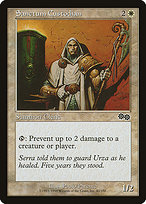 |  |  |  |  |  |
 |  | 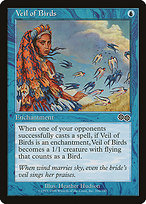 | 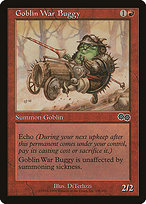 |  |  |  |  |  |  |
 |  |  |  |  |  |  |  |  |  |
 |  |  |  |  |  |  |  |  |  |
 |  |  |  |  |  |  |  |  |  |
Run D contains 25 cards each twice. Cards are in a repeating color pattern of white, black, green, blue, red. It is probably printed on the same sheet as either A or B. The choice of first card is mostly arbitrary.
 |  |  |  |  |  |  |  |  |  |
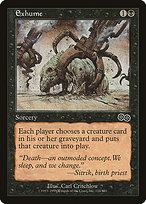 |  |  |  | 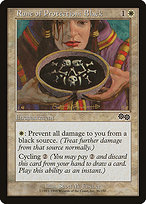 |  |  | 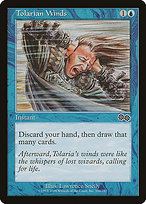 |  | 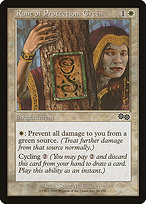 |
 |  |  |  | 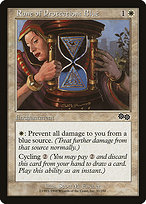 |  |  |  |  |  |
 |  |  |  |  |  |  |  |  |  |
 |  |  |  |  |  |  |  |  |  |
The rare sheet has one copy of each rare card. There is a picture of the sheet. [2]
 |  |  |  |  |  |  |  |  | 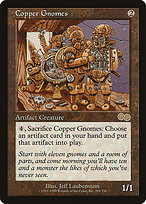 |
 |  |  |  |  |  |  |  |  |  |
 |  |  |  |  |  |  |  |  | 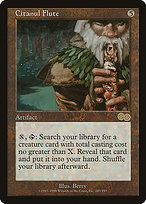 |
 | 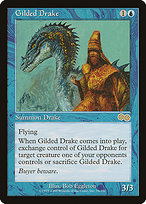 |  |  |  |  |  | 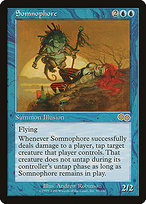 |  |  |
 |  |  |  |  |  |  |  |  |  |
 |  |  |  |  |  |  |  |  | 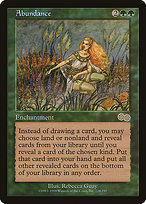 |
 |  |  |  |  |  |  |  |  |  |
 |  |  |  |  |  |  |  |  |  |
 |  |  |  |  |  |  |  |  |  |
 |  |  |  |  |  |  |  |  |  |
 |  |  |  |  |  |  | 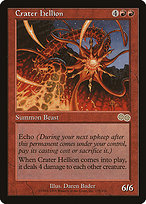 |  |  |
The Belgian printing uses striped collation with 10 × 11 sheets. Packs are back-facing and contain 3 uncommons, 1 rare, and 11 commons (in that order). Basic lands do not appear in booster packs.
| 3 Uncommons | 1 Rare | 11 Commons |
Starter decks have 3 rares, 10 uncommons, 32 commons, and 30 basic lands in addition to a rulebook. Observed decks are front-facing with lands followed by rares, uncommons, and commons. There is a tournament play insert between the rares and the uncommons and a rules insert between the uncommons and commons. Decks have both an inner and outer seal.
| 30 Lands | 3 Rares | Tournament Play Insert | 10 Uncommons | Rules Insert | 32 Commons |
There is a single sheet that prints each common once. The top row is chosen to prevent blue cards from appearing next to each other on the sheet.
 |  |  |  |  |  |  |  |  |  |
 |  |  |  |  |  |  |  |  |  |
 |  |  |  |  |  |  |  |  |  |
 |  |  |  |  |  |  |  |  |  |
 |  |  |  |  |  |  |  |  |  |
 |  |  |  |  |  |  |  |  |  |
 |  |  |  |  |  |  |  |  |  |
 |  |  |  |  |  |  |  |  |  |
 |  |  |  |  |  |  |  |  |  |
 |  |  |  |  |  |  |  |  |  |
 |  |  |  |  |  |  |  |  |  |
There is a single sheet that prints each uncommon once. The top row is chosen to prevent blue cards from appearing next to each other on the sheet.
 |  |  |  |  |  |  |  | 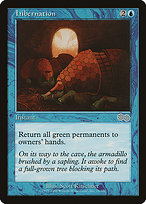 | 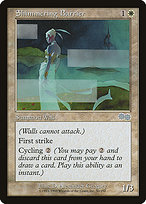 |
 |  |  | 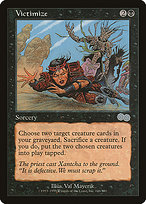 |  |  |  |  | 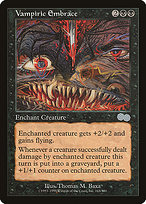 |  |
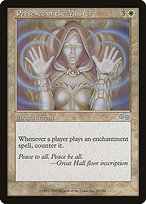 |  |  |  |  |  | 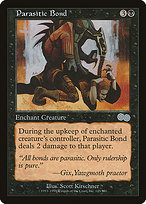 | 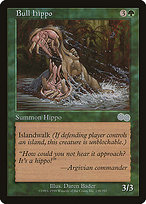 |  |  |
 |  |  |  |  |  | 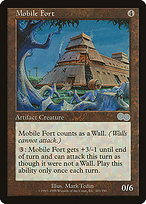 |  | 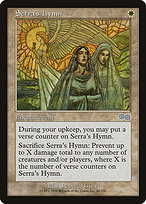 |  |
 |  |  | 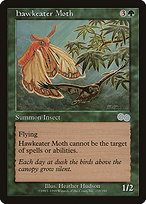 |  |  |  |  | 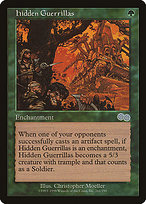 | 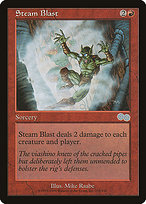 |
 |  |  |  |  | 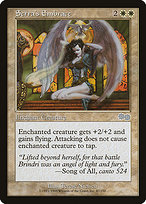 |  |  |  |  |
 |  |  | 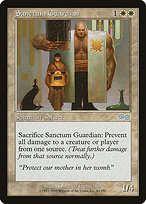 |  |  |  |  |  |  |
 | 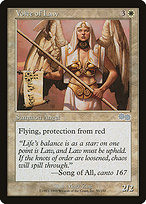 | 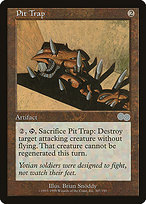 | 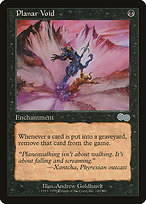 |  |  |  |  | 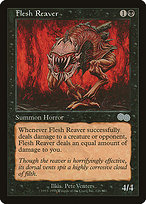 |  |
 |  |  |  |  |  |  |  |  | 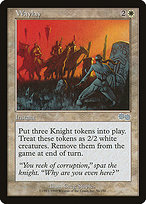 |
 |  | 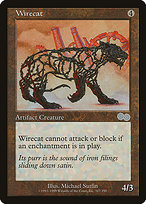 |  |  |  |  |  |  |  |
 |  |  |  |  |  |  |  |  |  |
There is a picture of the rare sheet. [3] It contains each rare card once.
 |  |  |  |  |  |  |  |  |  |
 |  |  |  |  |  |  |  |  |  |
 |  |  |  |  |  |  |  |  |  |
 |  |  |  |  |  |  |  |  |  |
 |  |  |  |  |  |  |  |  |  |
 |  |  |  |  |  |  |  |  |  |
 |  |  |  |  |  |  |  |  |  |
 |  |  |  |  |  |  |  |  |  |
 |  |  |  |  |  |  |  |  |  |
 |  |  |  |  |  |  |  |  |  |
 |  |  |  |  |  |  |  |  |  |
[1] The "Compilation of Manufacture Information for MTG Products" thread on the Magic Librarities Forum confirms the existence of US tournament packs.
[2] A picture of the US rare sheet was posted on Magic Librarities Forum by user wizard1.
[3] A picture of the Belgian rare sheet is on WorthPoint (archiving an eBay listing).